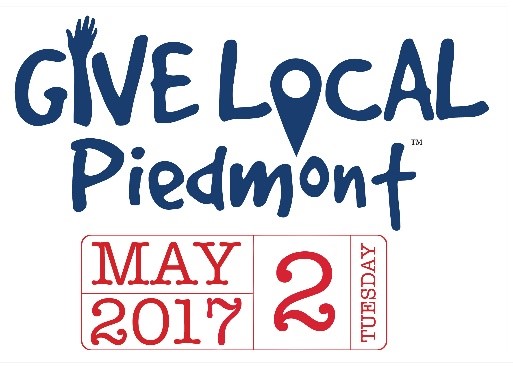Giving Giving a Second Thought
Our community’s biggest day of giving is rapidly approaching—Give Local Piedmont is one week from today on May 2, 2017. Last year, this 24 hour giving contest raised over $879,000 for over 60 local charities. At Meridian, we love this day as the generous spirit of our community is seen so clearly and so many worthy causes get the funds they need.

In advance of Give Local Piedmont, we wanted to share a few common myths about giving:
- Diversify your gifts—usually we preach about diversification, but charitable giving is one area in which you should concentrate funds. In an attempt to please everyone, many donors try to give many small gifts to a wide variety of charities. But many times, the processing fees can eat into small gifts and the impact of the gift is minimal. Instead, concentrate your giving on a select few that are the most meaningful to you. Do budget some of your gifting funds for a few surprise causes that you have an impulse to give to (such as disaster relief or GoFundMe drives), but try to concentrate your major gifts on a few charities to maximize your impact.
- Adding restrictions to your gift—we have all been told to note which fund you are giving to in the memo section of your check, however these directions can hurt the nonprofit more than they can help. As an article in Slate pointed out, after natural disasters, donations pour into aid organizations who are often stuck with more cash than can be spent prudently on aid. In the case of the 2004 Asian tsunami, aid agencies reportedly had to use a certain percentage of donated funds for housing. Without the flexibility to redirect the aid they received, some reportedly ended up building mini-mansions. Likewise, the American Red Cross has yet to spend the $500 million it raised for Haiti earthquake relief. Ideally, giving funds without designations allows your charity to spend the money where it feels the it would have the most impact.
- Avoiding overhead—another piece of common giving wisdom is to avoid giving to charities where the percentage of funds that they spend on “overhead” (i.e. salaries, marketing, offices, etc.) is high. We have been taught to reward frugal charities that scrimp on overhead by preferring them to charities that may have larger expenses. However, in a great TED talk by Dan Pallotta, he points out that demonizing overhead rather than seeing it as an investment in a cause that you believe in can have unintended results. Dan shares this story:
We launched the breast cancer three-days with an initial investment of 350,000 dollars in risk capital. Within just five years, we had multiplied that 554 times, into 194 million dollars after all expenses, for breast cancer research. Now, if you were a philanthropist really interested in breast cancer, what would make more sense: go out and find the most innovative researcher in the world and give her 350,000 dollars for research, or give her fundraising department the 350,000 dollars to multiply it into 194 million dollars for breast cancer research? 2002 was our most successful year ever. We netted for breast cancer alone, that year alone, 71 million dollars after all expenses. And then we went out of business, suddenly and traumatically.
Why? Well, the short story is, our sponsors split on us. They wanted to distance themselves from us because we were being crucified in the media for investing 40 percent of the gross in recruitment and customer service and the magic of the experience, and there is no accounting terminology to describe that kind of investment in growth and in the future, other than this demonic label of “overhead.” So on one day, all 350 of our great employees lost their jobs … because they were labeled “overhead.” Our sponsor went and tried the events on their own. The overhead went up. Net income for breast cancer research went down by 84 percent, or 60 million dollars, in one year.
This is what happens when we confuse morality with frugality. We’ve all been taught that the bake sale with five percent overhead is morally superior to the professional fundraising enterprise with 40 percent overhead, but we’re missing the most important piece of information, which is: What is the actual size of these pies? Who cares if the bake sale only has five percent overhead if it’s tiny? What if the bake sale only netted 71 dollars for charity because it made no investment in its scale and the professional fundraising enterprise netted 71 million dollars because it did? Now which pie would we prefer, and which pie do we think people who are hungry would prefer?
So, with Give Local Piedmont around the corner, we encourage you to think about the causes you care about, do some research on those organizations that are aligned with your heart, and then give big on May 2, 2017!!